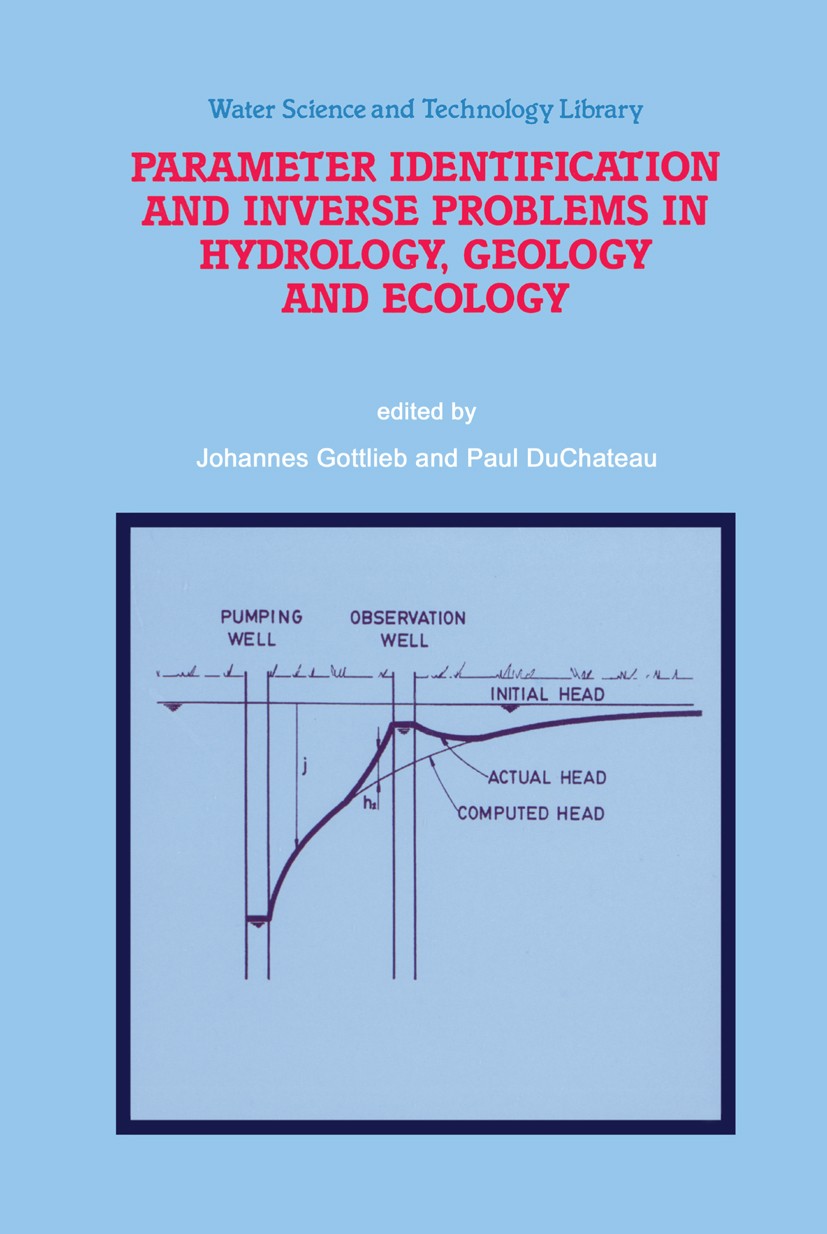| 书目名称 | Parameter Identification and Inverse Problems in Hydrology, Geology and Ecology | | 编辑 | Johannes Gottlieb,Paul DuChateau | | 视频video | http://file.papertrans.cn/742/741139/741139.mp4 | | 丛书名称 | Water Science and Technology Library | | 图书封面 |  | | 描述 | The Workshop on Parameter Identification and Inverse Problems in Hydrology, Geology and Ecology, Karlsruhe, April 10-12, 1995, was organized to bring to gether an interdisciplinary group drawn from the areas of science, engineering and mathematics for the following purposes: - to promote, encourage and influence more understanding and cooperation in the community of parameter identifiers from various disciplines, - to forge unity in diversity by bringing together a variety of disciplines that attempt to understand the reconstruction of inner model parameters, un known nonlinear constitutive relations, heterogeneous structures inside of geological objects, sources or sinks from observational data, - to discuss modern regularization tools for handling improperly posed pro blems and strategies of incorporating a priori knowledge from the applied problem into the model and its treatment. These proceedings contain some of the results of the workshop, representing a bal anced selection of contributions from the various groups of participants. The reviewed invited and contributed articles are grouped according to the broad headings of hydrology, non-linear diffusion and soil physics, | | 出版日期 | Book 1996 | | 关键词 | Groundwater; STATISTICA; ecology; geophysics; hydrology; hydrogeology | | 版次 | 1 | | doi | https://doi.org/10.1007/978-94-009-1704-0 | | isbn_softcover | 978-94-010-7263-2 | | isbn_ebook | 978-94-009-1704-0Series ISSN 0921-092X Series E-ISSN 1872-4663 | | issn_series | 0921-092X | | copyright | Kluwer Academic Publishers 1996 |
The information of publication is updating

书目名称Parameter Identification and Inverse Problems in Hydrology, Geology and Ecology影响因子(影响力)

书目名称Parameter Identification and Inverse Problems in Hydrology, Geology and Ecology影响因子(影响力)学科排名

书目名称Parameter Identification and Inverse Problems in Hydrology, Geology and Ecology网络公开度

书目名称Parameter Identification and Inverse Problems in Hydrology, Geology and Ecology网络公开度学科排名

书目名称Parameter Identification and Inverse Problems in Hydrology, Geology and Ecology被引频次

书目名称Parameter Identification and Inverse Problems in Hydrology, Geology and Ecology被引频次学科排名

书目名称Parameter Identification and Inverse Problems in Hydrology, Geology and Ecology年度引用

书目名称Parameter Identification and Inverse Problems in Hydrology, Geology and Ecology年度引用学科排名

书目名称Parameter Identification and Inverse Problems in Hydrology, Geology and Ecology读者反馈

书目名称Parameter Identification and Inverse Problems in Hydrology, Geology and Ecology读者反馈学科排名

|
|
|
 |Archiver|手机版|小黑屋|
派博传思国际
( 京公网安备110108008328)
GMT+8, 2025-11-22 07:16
|Archiver|手机版|小黑屋|
派博传思国际
( 京公网安备110108008328)
GMT+8, 2025-11-22 07:16


